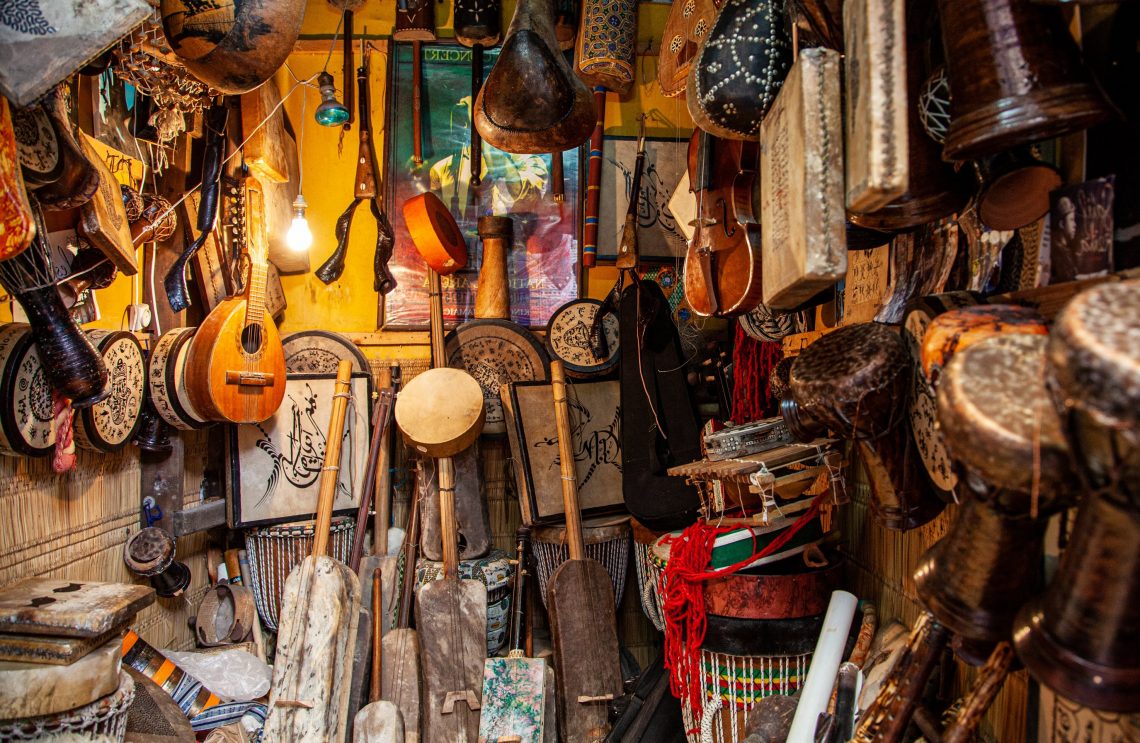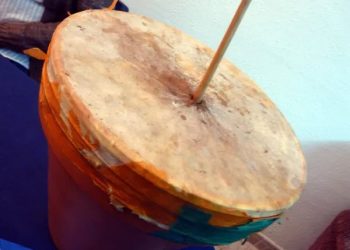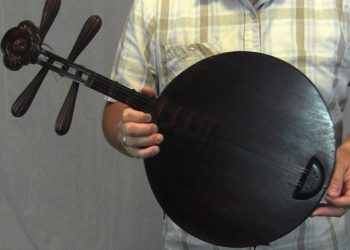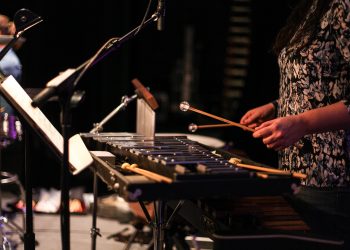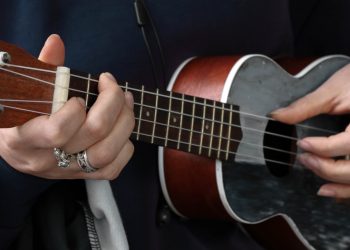Musical instruments have been an essential part of human culture for thousands of years, and they continue to inspire and amaze us with their beauty and versatility. While there are hundreds of musical instruments in the world, some are more unique and rare than others. In this article, we will explore the top 8 musical instruments that start with the letter Q. These instruments come from different parts of the world and have unique sounds and characteristics that make them stand out from the rest.
From the exotic sounds of the qanun to the intricate design of the quena, each of these instruments has a story to tell. Whether you’re a seasoned musician or just starting out, this list will give you a glimpse into the world of musical instruments that you may not have explored before. We will explore the history, origin, and unique features of each instrument, as well as provide some examples of famous songs that feature these instruments. So, join us on this musical journey and discover the beauty of the top 8 musical instruments that start with the letter Q.
1. Qanun
The qanun is an important part of Middle Eastern and North African music. It’s a plucked string instrument played with the hands. This ancient tool has been used for centuries by musicians to create beautiful sounds, often in combination with other instruments like ouds or violins.
The structure of the qanun is unique, consisting of two sets of strings that are placed over a trapezoidal box frame. Its sound is distinctly resonant and can be heard from afar thanks to its large size. The strings are tuned according to different musical scales depending on what type of music it’s being used for. For example, traditional Arabic music requires one tuning while classical Turkish music calls for another.
Playing the qanun involves using the fingers to strum both sets of strings at once. Doing so creates a rich texture that is usually accompanied by simultaneous footwork on pedals underneath the instrument which control volume and pitch changes. Additionally, performers use techniques such as vibrato and glissando to produce effects like tremolo or portamento respectively.
As well as producing solo works, the qanun is frequently used as part of ensembles due to its ability to blend seamlessly with other instruments in harmony-based compositions – making it an essential component of many cultural music styles around the world today.
2. Qin
The qin is a traditional Chinese stringed instrument with a long history that dates back to the Zhou Dynasty. It has an unusual shape, with two curved arms connected by a wooden board and five strings stretching across its neck. Its sound is warm and mellow, produced by plucking or striking the strings with bamboo plectrums attached to the player’s fingers.
The qin was originally used as a solo instrument in court music but it eventually found its way into popular culture as well. Today, it can be heard in many different styles of music such as jazz, pop, folk, and even rock. It also makes for great accompaniment when combined with other instruments like flutes or erhus – both of which have become staples in Chinese orchestras over time.
Playing the qin requires patience and dedication from its practitioners since it takes years to master all the techniques involved in creating beautiful melodies on this delicate instrument. Aspiring musicians must first learn how to properly tune each string before progressing onto more advanced topics like vibrato, tremolo, slides, harmonics, and so forth.
By taking the time to understand these techniques and develop their own style of playing, performers can create stunning musical pieces that captivate audiences around them. The qin may not be well known outside of China but those who take the time to explore this powerful instrument will discover plenty of hidden treasures waiting inside it.
3. Quena
Moving on from the quatro, let’s take a look at another traditional Chinese instrument: the quena. This unique wind instrument is made of bamboo and has an open-ended design that produces a gentle, flute-like sound when played. The quena’s origins can be traced back to ancient Inca civilizations where it was used for both ritual ceremonies and entertainment purposes.
It differs from other popular instruments like the panflute or recorder in that its construction requires precise measurements and careful tuning in order to produce optimal tones. To get started playing the quena all you need are your hands – no extra tools required! Its simple yet complex structure makes it ideal for beginners who want to explore different sounds without spending too much time learning complicated techniques.
One thing that sets this instrument apart is how quiet it can be while still being incredibly expressive. From soft notes meant to evoke emotion to loud blasts that carry energy through any room – the quena provides performers with plenty of options for creating beautiful pieces of music. And don’t forget about the visuals either; watching someone play this delicate instrument is almost as mesmerizing as listening to them do so!
No matter what genre of music you’re passionate about, adding a quena into your repertoire will undoubtedly give you exciting new creative possibilities to work with. Whether you decide to use it as accompaniment, solo performance, or even just background noise – it’s up to you! So why not pick one up today and start discovering all the musical wonders this incredible instrument has waiting inside?
4. Quenacho
Building on the traditional sounds of the quena, let’s explore an exciting variation: the quenacho. This fusion instrument takes aspects from both the quena and charango – another small Andean stringed-instrument – to create a unique sound. Much like its ancestor, it features five finger holes along with a sixth that is designed for humming notes by pressing down with your tongue. It also has 12 strings that make up two sets of six which are tuned in unison to give it more depth when playing chords or melodic patterns simultaneously.
The result? A hybrid instrument that produces a sweet yet powerful tone due to its combination of materials (bamboo & wood) and construction methods used during production. Its versatility allows players to experiment with different genres including rock, jazz, classical, folk music – you name it! Plus, because of its size (roughly 9 inches long), it’s easy to take wherever you go for spontaneous performances or just practice sessions at home.
But perhaps most impressive about this little powerhouse is how quickly one can learn the basics and start making music right away. For those who don’t have much experience playing other instruments – no worries; basic techniques such as strumming, picking and sliding will get you jamming in no time! So if you’re looking to add some fresh flavor into your repertoire without having to invest too much time mastering complex skills – then look no further than the quenacho!
No matter what musical style inspires you, learning how to play this dynamic instrument opens up endless possibilities for expression through song. From intimate acoustic ballads all the way up to high energy jams – there’s something here for everyone! Now let’s grab our quenachos and head out onto center stage; we’ve got some serious grooving ahead of us!
5. Quijada De Burro
This unique Andean instrument is one you won’t find anywhere else – the quijada de burro. This percussion instrument is made from the jawbone of a donkey and has been used for centuries in traditional Latin American music to add a distinct sound. It’s typically played by striking the bone with either hands or sticks, creating an unmistakable twang that fills any space it’s performed in!
The quijada de burro adds depth and complexity to rhythms, bringing out the beauty of traditional songs like huaynos, zambitas, carnavales and more. Furthermore, it can also be used as an accompaniment when playing other instruments such as flutes or guitars. Plus, it’s incredibly easy to learn how to play – just strike away at different parts of the jawbone to create some truly captivating sounds!
These days, you’ll often see this instrument being used in modern genres too – from folk-rock crossovers all the way up to electronic dance numbers. That said, no matter what style you prefer playing there’s sure to be something here for everyone! So if you’re looking for an exciting addition to your musical repertoire then why not give the quijada de burro a go?
From its intriguing history right down to its wide array of uses – this special piece of equipment will take your performance up another level; let loose and start making some serious noise!
6. Quinticlave
The quinticlave is another instrument that offers a unique sound to the musician. Unlike the quintephone, this instrument has five separate keys which are connected by an elastic band. When played, the vibration of each key creates its own distinct tone and pitch. This allows musicians to create a wide range of harmonic textures and complex rhythms in their compositions. What’s more, it also enables them to craft intricate melodies with ease – thanks to its ability to easily transition between notes without any loss in volume or clarity!
Furthermore, compared to other instruments like pianos or guitars, the quinticlave requires less physical effort from the player due to its light construction. As such, it can be used for extended periods of time without causing fatigue or discomfort – making it ideal for those long studio sessions. Additionally, its portability makes it great for jamming outdoors too; allowing you take your music anywhere you go!
In terms of versatility, the quinticlave is highly adaptable as well: try combining different techniques like plucking and strumming on each key simultaneously while varying pressure points on certain strings; creating sounds that will astound even seasoned players. Alternatively, use one hand solely dedicated to playing chords while using the other hand to add flourishes of melody – turning simple songs into mesmerizing works of art!
There’s no doubt about it – with its innovative design and expansive capabilities, the quinticlave brings something truly special to today’s musical landscape. If you’re looking for an instrument that provides plenty of room for creativity then look no further than this remarkable device – let yourself explore all its nuances and possibilities today!
7. Quinton
The Quinton is a unique instrument that offers musicians an exciting range of sounds. Like the quinticlave, it has five separate keys which are connected by elastic bands. However, instead of creating distinct tones and pitches when played, each key produces wave-like patterns with varying levels of intensity – providing players with a wide selection of sonic palettes to work with!
What’s more, the Quinton can also be used for fingerpicking as well as strumming chords: take your pick from its light touch or heavier attack depending on what kind of sound you’re looking for. Additionally, if you want to add some sparkle to your compositions then this instrument also comes equipped with special effects like vibrato and tremolo – allowing you to craft truly captivating pieces.
But perhaps the most impressive feature of all is its ease of use; thanks to its lightweight construction and comfortable design, anyone can play it without getting tired quickly. Whether you’re a beginner just starting out or an experienced musician honing their skills, the Quinton will serve your needs perfectly – so why not give it a try today?
No matter what type of music you create, one thing remains certain: The Quinton provides plenty of opportunity for exploration and experimentation – offering endless possibilities for any aspiring artist! With its expansive array of features at hand combined with its user-friendly interface, now’s the time dive into this remarkable instrument and discover everything it has to offer!
8. Quitiplas
Moving on from the Quiribillos, another musical instrument worth exploring is the QuitipLAS. This one-of-a-kind contraption has been crafted with a range of features that make it quite remarkable; not only does it have three strings and two frets but also comes equipped with an adjustable bridge system – allowing users to customize their sound like never before! With its ability to produce both melody and harmony, this device offers aspiring musicians plenty of opportunities for creative expression.
What really sets this instrument apart though is its lightweight design, making it easy to carry around without feeling fatigued while playing. Furthermore, thanks to its simple setup process and intuitive tuning capabilities, getting started with the QuitipLAS doesn’t require any expensive accessories or extra tools – meaning you won’t need to break your budget in order to get going. In addition, by adjusting the tension of each string you can produce various tones quickly and accurately – giving you freedom when creating music.
Also unlike other instruments which rely heavily on practice and experience, learning how to properly use the QuitipLAS isn’t as challenging as some may think. Its ergonomic shape ensures comfort during long sessions and makes manipulating notes much easier – allowing beginners to pick up new tunes even faster than usual. Plus, no matter what style of music you’re into producing, this wonderful tool will become an invaluable companion in your journey towards becoming a true artist!
The QuitipLAS truly provides endless possibilities for exploration – opening up countless avenues for those who wish to explore their creativity through sound.
